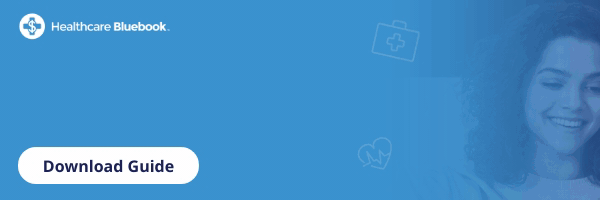-1.jpeg?width=1200&height=675&name=AdobeStock_451792733%20(1)-1.jpeg) Healthcare is constantly evolving, from wearable health devices to artificial intelligence (AI) innovations. It’s important to be aware of the latest healthcare trends to identify opportunities for change and understand how the future of healthcare may impact your employees.
Healthcare is constantly evolving, from wearable health devices to artificial intelligence (AI) innovations. It’s important to be aware of the latest healthcare trends to identify opportunities for change and understand how the future of healthcare may impact your employees.
As healthcare evolves, so do employees’ needs and the benefits that attract and retain them. Although emerging healthcare trends are impacting the healthcare benefits landscape, helping employees navigate to high-quality affordable healthcare will remain a top priority. With an eye on identifying high-value care, let's look at some of the most compelling trends that could impact outcomes.
Healthcare Trends to Watch
As healthcare evolves, it’s important to be aware of how your organization can enhance its current benefits structure and how the latest trends can impact your employees. To that end, we compiled some of the top developments on the horizon and how they could significantly impact the healthcare landscape.
1. Personalized Care
Accessing and using health data to improve patient care is one of the top healthcare trends in 2023. By accessing this data, providers can deliver care tailored to their patients’ preferences and health needs.
Personalized care optimizes patient outcomes, reduces healthcare costs, and strengthens the patient-provider relationship, resulting in a more effective health management strategy that includes disease prevention.
But personalized care is more than just the care received in a physician’s office. Employers can take it a step further by investing in quality and cost navigation solutions that offer concierge services.
For example, Bluebook CareConnect™ provides support to help members identify, schedule, and receive care from high-value providers. A concierge walks the member through the process of finding the best providers for their needs and stays connected to the member throughout their care journey, removing the stress and guesswork of finding care.
2. Artificial Intelligence (AI)
Perhaps one of the biggest trends in technology today is artificial intelligence. Proponents of AI maintain that the availability of healthcare data, combined with the increased adoption of digital tools, will create innovative healthcare solutions that will improve patient care, decrease health-related stress, improve work productivity, and reduce absences.
AI could also improve disease identification and potentially help physicians make more informed decisions, accelerate disease research, streamline operations, and personalize care. For example, AI is currently used to analyze data collected from wearable devices. It can then help the provider personalize care by using natural language processing models to generate text explaining treatment options, create questions to ask the patient, and provide recommendations to the physician.
3. Mental Health
During and after the COVID-19 pandemic, many people experienced isolation, job loss, or the loss of a loved one. As a result, employers became profoundly aware of the importance of mental health benefits and the need to bolster their benefits design with greater access to mental health providers.
Today, many plans offer telehealth and other on-demand services to create and enrich a comprehensive benefits plan that addresses whole-body health, including physical, mental, emotional, and social needs.
4. Wearable Technology
Wearable technology no longer merely monitors steps and heart rates. An increasing number of consumers are becoming engaged with their health and taking charge through continuous health monitoring that enables more personalized care between a patient and their physician and facilitates a proactive approach rather than a reactive one.
Wearable devices can monitor exercise, mental health, and cardiovascular health. In addition, these devices can obtain real-time data for clinical trials that can potentially improve outcomes and strengthen patient engagement.
5. Addressing Healthcare Inequity
Social determinants of health (SDOH) significantly contribute to healthcare inequities and disparities. This can impact an individual’s well-being, especially when they have limited access to healthy and safe options.
SDOH includes income, education, job security, working conditions, housing, access to food, and more. Issues around SDOH are especially apparent in low- or middle-income communities, prompting healthcare leaders to implement strategies that use data-driven programs to address SDOH challenges.
It’s important to understand that not all workers will have the same level of health literacy, and healthcare is only becoming more complex. Employers can also address healthcare inequity by frequently communicating about health benefits and providing price transparency and navigation solutions that help employees play an active role in their healthcare.
Invest in Solutions That Stay Up to Date with the Future of Healthcare
Healthcare Bluebook is committed to staying ahead of healthcare trends, from compliance requirements to medical and Rx quality and price transparency and beyond. Download our e-book to learn how to control your healthcare spending with a healthcare navigation solution while eliminating confusion and guesswork.

